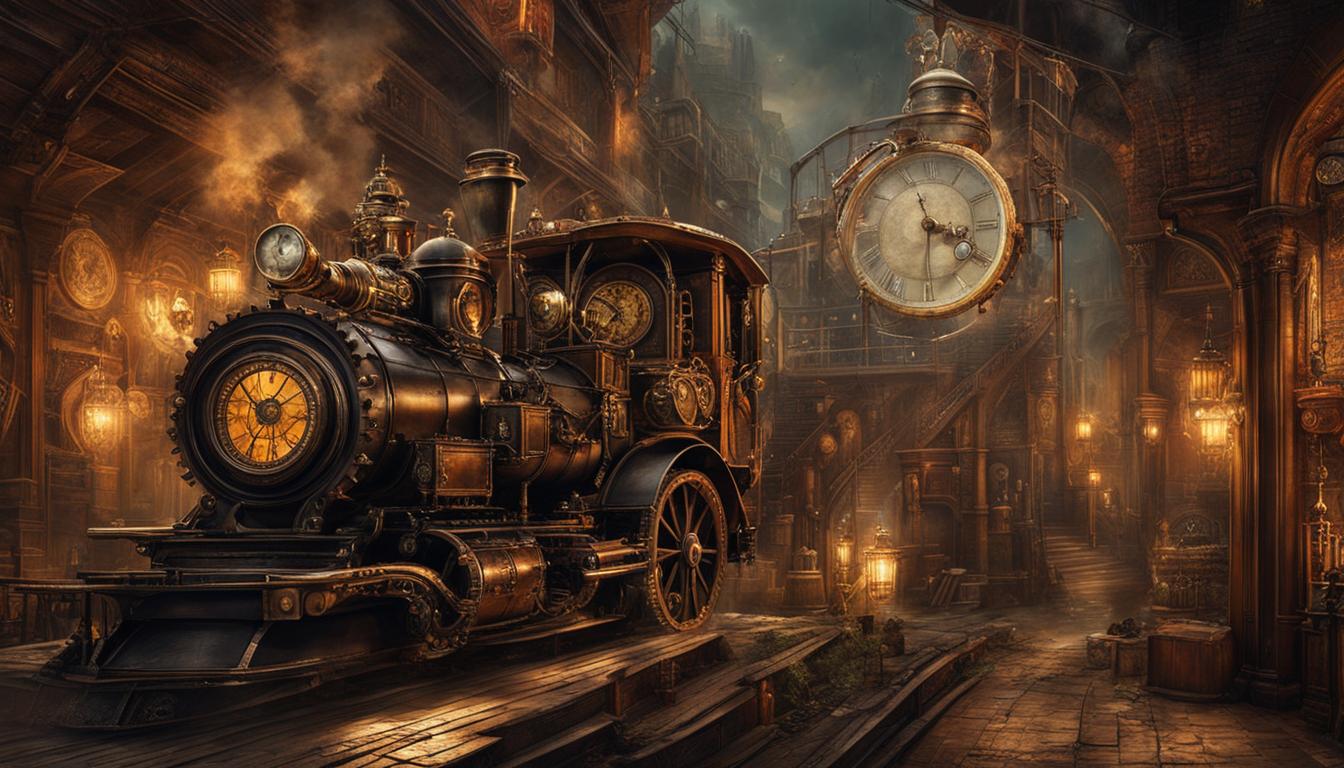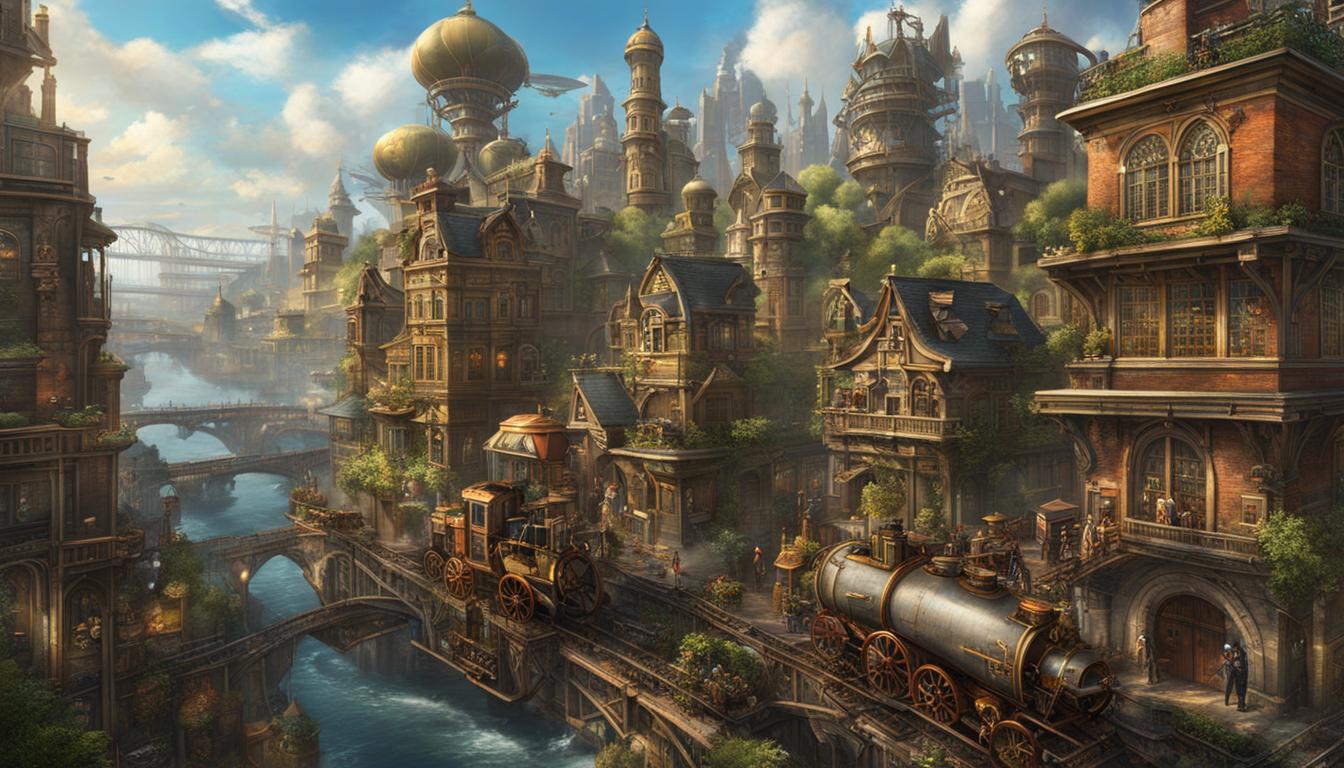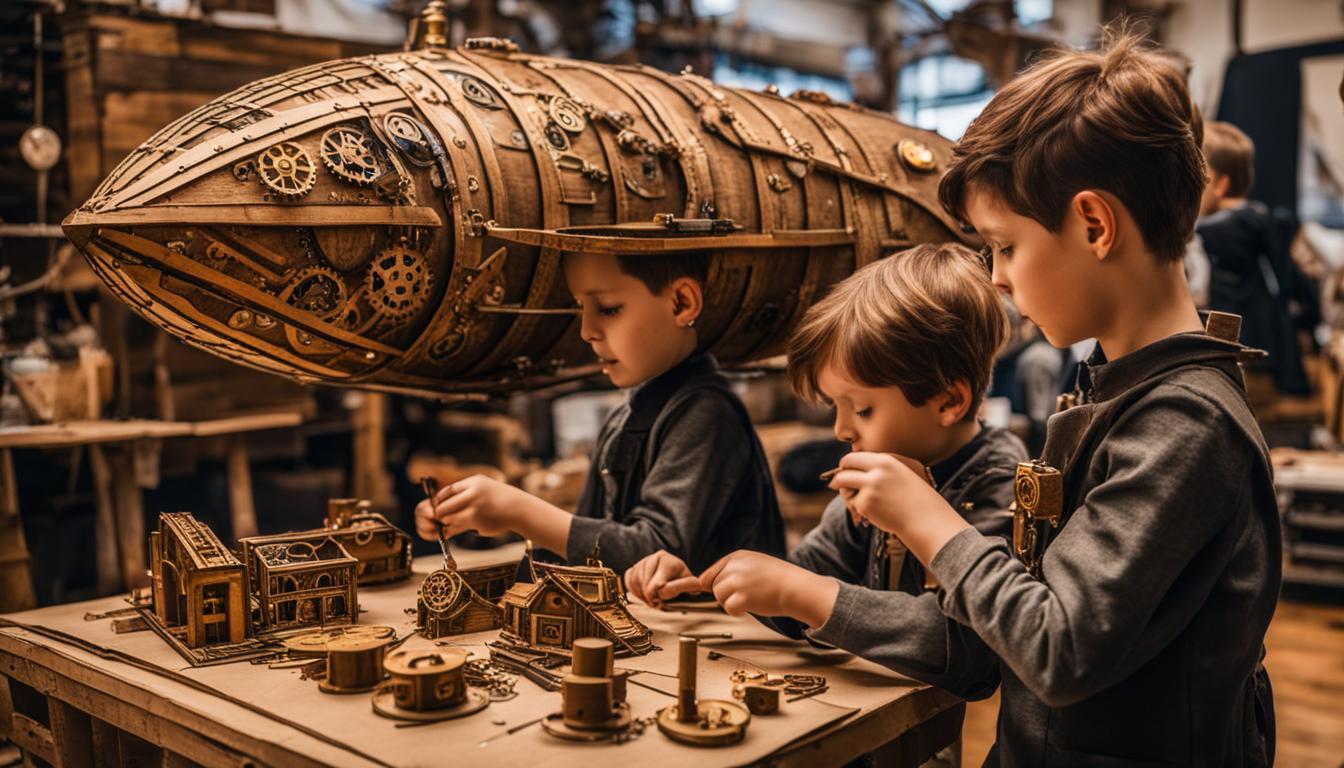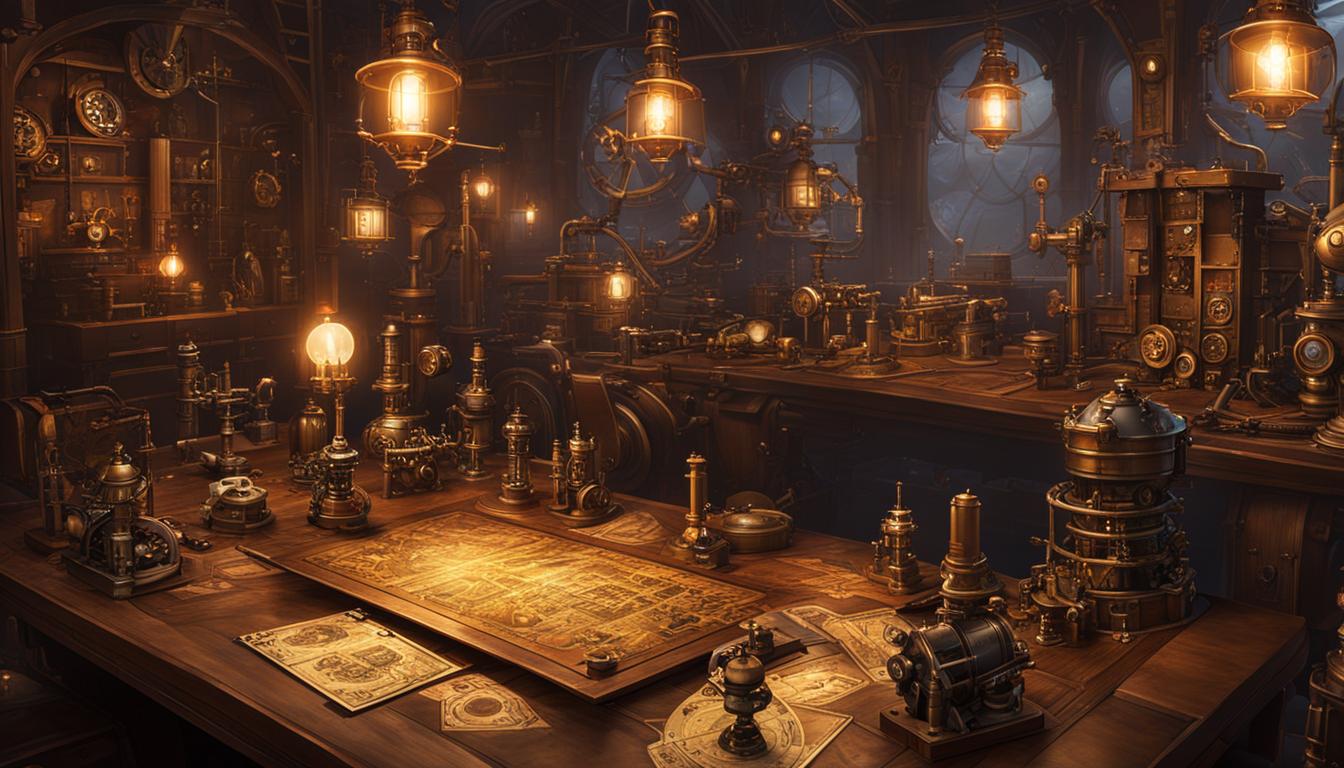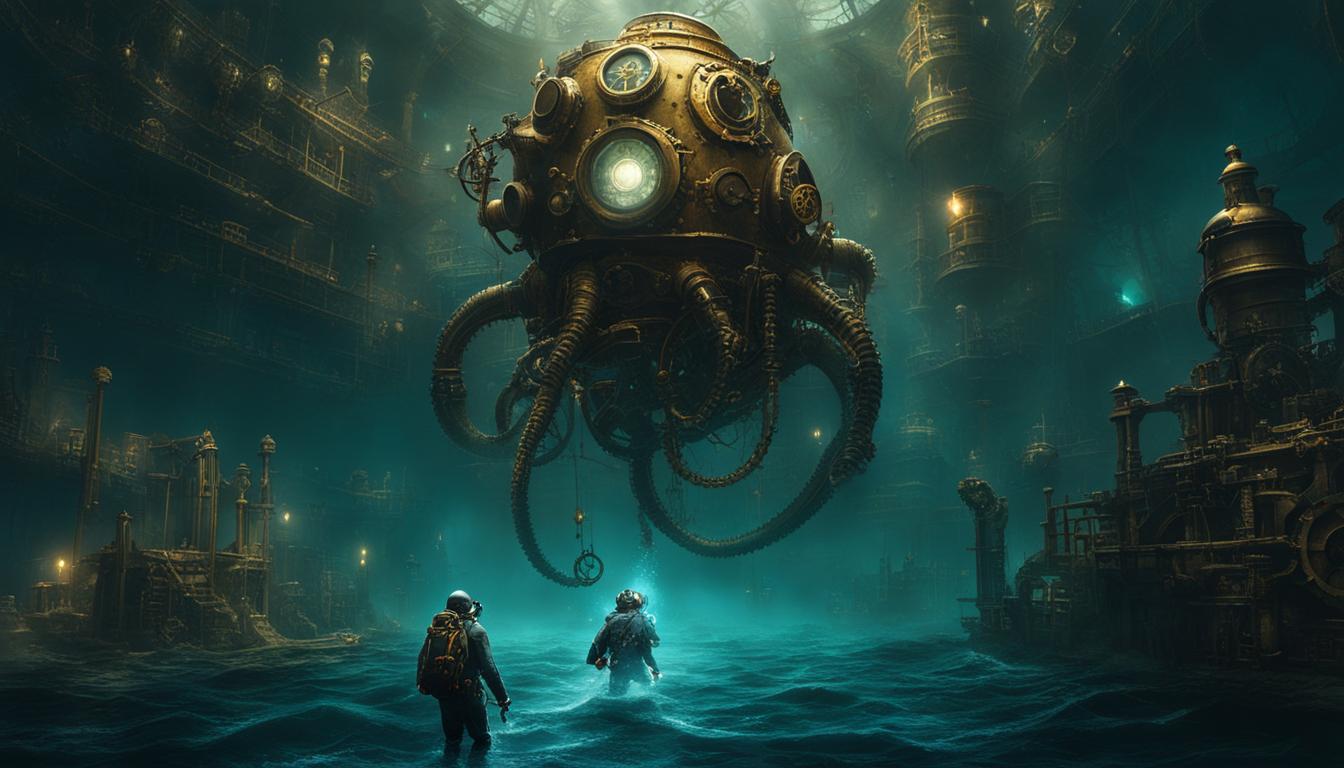Steampunk, a captivating subgenre of science fiction, has undergone a fascinating evolution over time. Drawing inspiration from retrofuturistic technology and aesthetics, it embraces the fantastical visions of 19th-century industrial steam-powered machinery. With its distinct blend of historical elements and imaginative futures, steampunk has captured the imaginations of readers, viewers, and creators alike.
Steampunk works transport us to alternative histories of the Victorian era or the American “Wild West,” incorporating anachronistic technologies and inventions as envisioned by people in the 19th century. Unlike Neo-Victorianism, steampunk goes beyond mere homage, weaving in elements from fantasy, horror, historical fiction, alternate history, and other branches of speculative fiction. This makes it a genre like no other, with a vast scope that explores alternative futures or pasts while addressing real-world social issues.
While the term “steampunk” was first coined in 1987, its roots can be traced back to the works of literary pioneers such as Jules Verne, H. G. Wells, and Mary Shelley, who infused their stories with steam-powered technology and imaginative inventions. However, it was not until K. W. Jeter’s use of the term that the genre truly began to take shape.
Today, steampunk continues to evolve and influence various forms of media and artistic expression. From literature to film, television, video games, fashion, art, and music, the steampunk aesthetic has left an indelible mark on popular culture. With steampunk conventions and communities thriving worldwide, the genre has sparked a vibrant and imaginative community of enthusiasts and creators.
Key Takeaways:
- The steampunk genre draws inspiration from 19th-century industrial steam-powered machinery.
- Steampunk is a hybrid genre that incorporates elements from science fiction, fantasy, historical fiction, and more.
- Notable literary precursors of steampunk include Jules Verne, H. G. Wells, and Mary Shelley.
- Steampunk has evolved and expanded into various forms of media, including film, television, video games, fashion, art, and music.
- Steampunk conventions and communities have flourished, bringing together enthusiasts and creators from around the world.
The Origins and Precursors of Steampunk
Steampunk, as a genre, has a rich history that can be traced back to 19th-century literature and the imaginative minds of visionary authors. Influenced by the Victorian era and its fascination with steam-powered technology, these early literary works laid the foundation for what would later become known as steampunk.
Authors such as Jules Verne, H. G. Wells, Mary Shelley, and Edward S. Ellis were pioneers in incorporating steam-powered machinery and inventions into their stories. Verne’s “Twenty Thousand Leagues Under the Sea” and Wells’ “The Time Machine” are often cited as early examples of steampunk, with their depictions of advanced technology and alternate Victorian realities.
However, it was K. W. Jeter who first coined the term “steampunk” in 1987, popularizing the genre and paving the way for its future evolution. Alongside these literary works, other mediums also contributed to the visual aesthetic of steampunk. Remedios Varo’s surreal paintings and Georges Méliès’ iconic film “Le Voyage Dans La Lune” played a significant role in shaping the unique blend of retrofuturistic imagery that defines steampunk.
| Author | Notable Work |
|---|---|
| Jules Verne | Twenty Thousand Leagues Under the Sea |
| H. G. Wells | The Time Machine |
| Mary Shelley | Frankenstein |
| Edward S. Ellis | The Steam Man of the Prairies |
Steampunk’s literary precursors not only laid the groundwork for the genre but also influenced subsequent works in fiction, film, and other art forms. The impact of these early visionaries continues to resonate in the steampunk genre, captivating audiences with its imaginative blend of history, technology, and adventure.
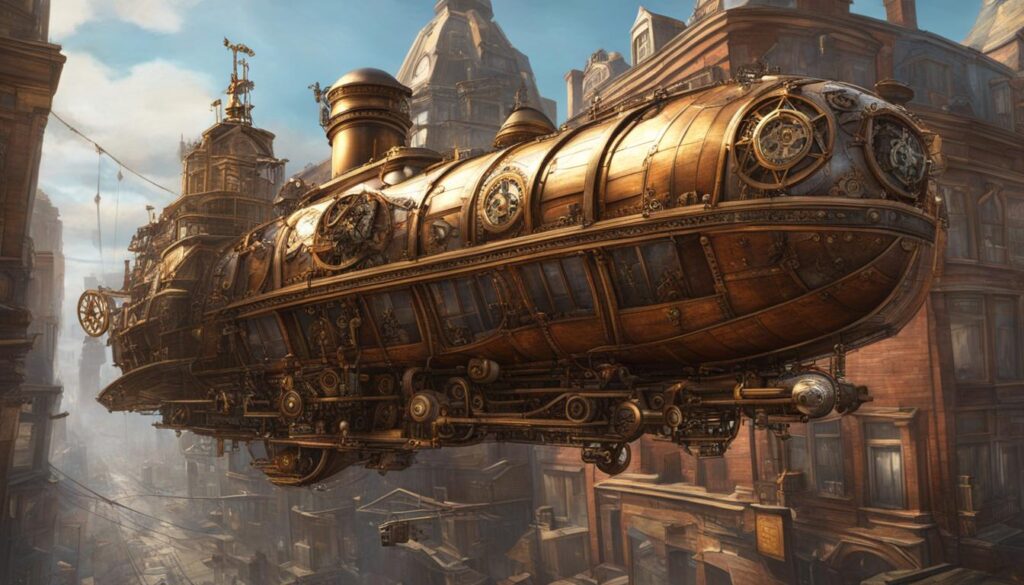
Influence of the Victorian Era
“The Victorian era and its fascination with steam-powered technology played a crucial role in shaping the steampunk genre. The aesthetics, fashion, and societal norms of that time continue to inspire and influence steampunk works today.”
Steampunk’s deep-rooted connection to the Victorian era is evident in its aesthetics, fashion, and societal themes. The elegant attire of the period, characterized by corsets, top hats, and waistcoats, has become synonymous with steampunk fashion. The genre often explores social issues prevalent during the Victorian era, such as class divisions, industrialization, and the impact of scientific progress on society.
While steampunk has evolved and expanded over the years, its historical progression remains essential to its identity. By delving into the origins and literary precursors of steampunk, we gain a deeper understanding of the genre’s evolution and the enduring influence of the Victorian era.
The Evolution and Influence of Steampunk Today
Steampunk, a genre that combines elements of science fiction, fantasy, and historical fiction, has undergone a remarkable evolution in the modern era. This evolution is characterized by the emergence of various steampunk variations and the continuous development of steampunk styles.
Growth in steampunk fiction has seen a surge in popularity, with authors exploring new themes and pushing the boundaries of the genre. Notable works like Tim Powers’ “The Anubis Gates,” William Gibson and Bruce Sterling’s “The Difference Engine,” and Cherie Priest’s “Boneshaker” have captivated readers with their imaginative storytelling and intricate world-building.
Steampunk has also made its mark in other forms of media. Films and television shows featuring steampunk aesthetics have gained a dedicated following. Examples include Disney’s “20,000 Leagues Under the Sea” and Studio Ghibli’s “Castle in the Sky,” both of which incorporate stunning visual designs and evoke a sense of adventure and wonder.
Steampunk has not only influenced literature and film but has also found its place in the world of video games. Games such as the “BioShock” series and “Final Fantasy” have integrated steampunk elements into their narratives, creating immersive experiences for players.
Steampunk’s Cultural Impact
The growth and transformation of steampunk themes have extended beyond the realms of storytelling. Steampunk has become a cultural phenomenon, inspiring fashion, art, and music. Steampunk enthusiasts gather at conventions around the world, showcasing their unique costumes and creations.
The enduring appeal of steampunk lies in its ability to transport audiences to a world that blends history and imagination. By reimagining the past and exploring alternative futures, steampunk continues to capture the hearts and minds of people from all walks of life.
| Steampunk Medium | Significant Works |
|---|---|
| Literature |
|
| Film and TV |
|
| Video Games |
|
With its ever-evolving styles and limitless potential for creativity, steampunk continues to be a source of inspiration and fascination in the modern world.
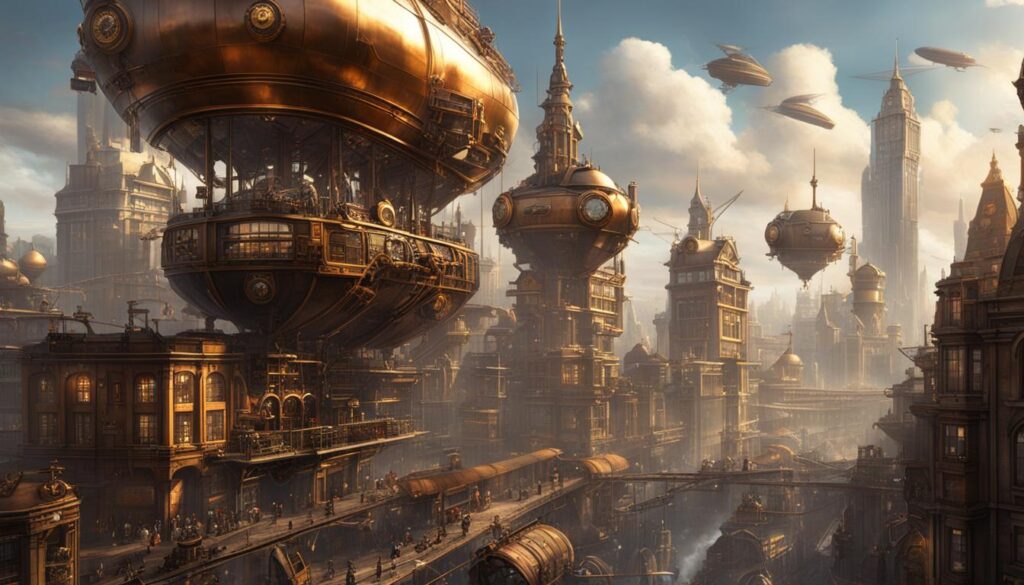
Conclusion
Steampunk: a genre that merges science fiction, fantasy, and historical fiction, crafting a unique world inspired by the Victorian era and the wonders of steam-powered technology. With its captivating aesthetic and diverse influences, steampunk has become a genre that continues to inspire and intrigue.
From literature to film, television to video games, the steampunk genre has left an indelible mark on the creative landscape. Its imaginative worlds and striking visuals have enthralled audiences and sparked the imaginations of countless creators.
Steampunk conventions and communities have flourished, providing a space for enthusiasts to come together and celebrate all things steampunk. This vibrant community has further propelled the influence of the genre, fostering collaboration and inspiring new works of art.
With its ability to reinterpret history and explore alternate futures, steampunk’s allure is undeniable. Whether it’s through the written word, visual media, or artistic expression, steampunk continues to captivate audiences around the world, immersing them in a world that seamlessly blends the past, the present, and the future.
FAQ
What is steampunk?
Steampunk is a subgenre of science fiction that draws inspiration from retrofuturistic technology and aesthetics. It combines elements of the Victorian era and steam-powered machinery with fantasy, horror, and historical fiction.
How is steampunk different from Neo-Victorianism?
While both genres incorporate Victorian era elements, steampunk focuses on alternative histories and anachronistic technologies, while Neo-Victorianism aims to recreate and reinterpret the Victorian era.
Where did the term “steampunk” come from?
The term “steampunk” was first used in 1987 by K. W. Jeter to describe a specific type of science fiction. However, works that fall into the steampunk genre were created as far back as the 1950s or earlier.
Who were the literary precursors to steampunk?
Authors like Jules Verne, H. G. Wells, Mary Shelley, and Edward S. Ellis laid the foundation for steampunk with their incorporation of steam-powered technology and imaginative inventions in their works.
How has steampunk evolved over time?
Steampunk has expanded into various forms of media, including literature, film, television, and video games. It continues to explore diverse themes and influences, captivating audiences with its imaginative worlds and aesthetics.
How has steampunk influenced fashion, art, and music?
Steampunk has inspired unique fashion styles, with communities and conventions dedicated to this aesthetic. It has also influenced art and music, allowing for creative expressions that blend history and imagination.
What makes steampunk a unique genre?
Steampunk’s ability to reinterpret history and explore alternate futures sets it apart. It blends elements of science fiction, fantasy, and historical fiction, making it a genre that continuously captivates and inspires.

